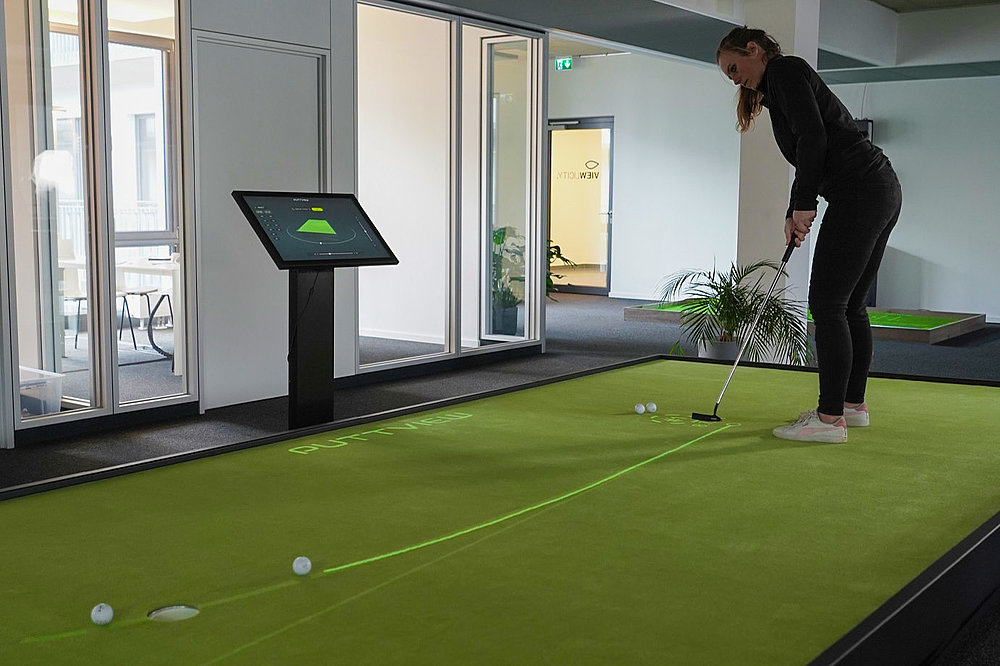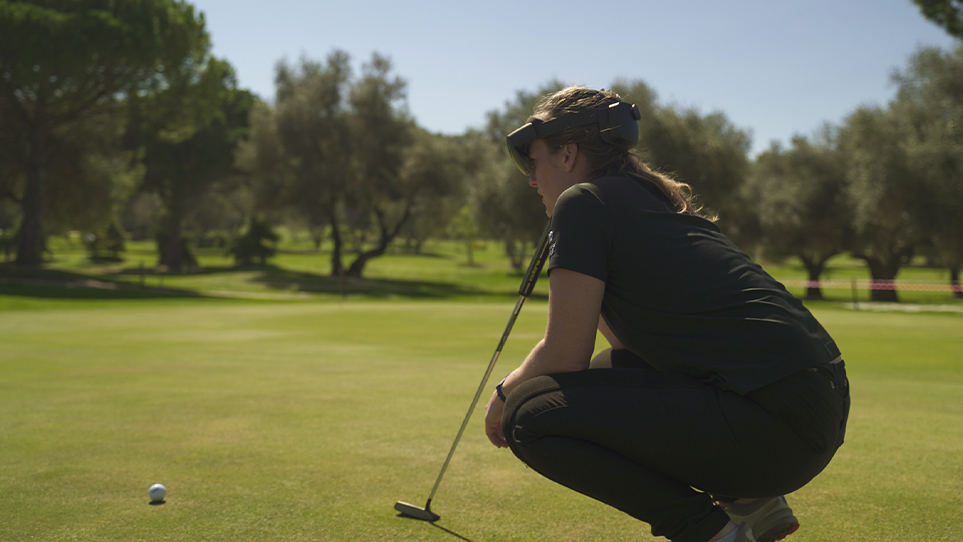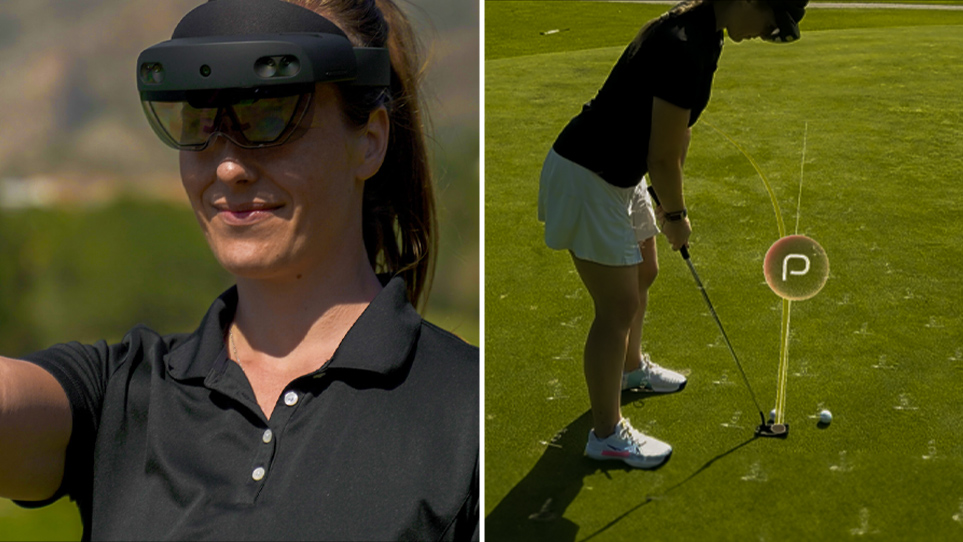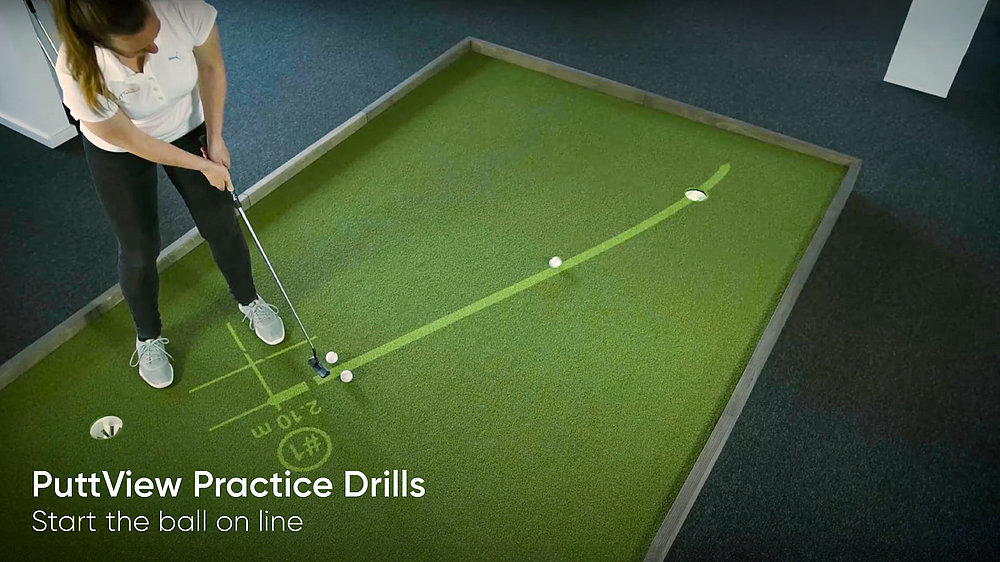How I Finally Got Control Over My Putting
Ann-Kathrin Nahl

Would you consider yourself a good putter? For the longest time in my golfing career, I could answer that question with a big solid no. But now is the time to tell the story of how that changed and give hope to the ones who think that is impossible.
Putting has never been something I have taken too seriously or was good at. I started playing golf when I was 14, lowered my handicap from 54 to 29.5 in my first tournament, and ended up playing college golf in the US. My weakness has always been my short game, to the point where when Coach was watching, I kept thinking to myself “he probably wishes he could execute this shot himself.” An additional challenge in the US was grain. Growing up in Germany, it never occurred to me to pay attention to which direction the grass was growing in. To put it shortly: I sucked at putting. And while some of you reading this might wonder how she can say that while playing college golf, it is the truth. Of course, I could hole putts, and obviously, through experience, I had some idea of what was going on on the green, but other than that I can honestly say I was clueless.

What is a putt?
To make matters worse, I started my career in golf journalism. I traveled the world and got lucky enough to play some amazing courses, witness winning putts drop, and interview great putters, but to me putting remained something that could not be learned and I wasn’t particularly interested in it. I couldn’t visualize a putt in my mind, see how you can “feel” the putt, or that there is a method behind it other than hoping you read the green correctly and the ball hits the cup. Even after asking people who I thought were good putters, I still couldn’t see what they did, so I never pursued my quest of becoming a better putter too much. As I just believed it was a lost cause. This was the state of mind when I started working for PuttView. While I knew the product and what it could do, I still believed that it was a tool for anyone but me. How could it be helping me, when I had many putting lessons and conversations, yet still couldn’t grasp the concept? The first step at every company you work for, especially in marketing, is to familiarize yourself with the product. So I did. I looked at the lines, the features the options you have to individualize the green to your needs. And it was like unlocking a map one piece at a time. I had never realized that there is a fundamental difference between seeing the Ideal Line and the Aiming Line. I am not kidding. Getting back to a conversation I had with a teammate: She would tell me that she picks a point next to the hole and that is where she aims at. I couldn’t even get myself to visualize that point. Sure, I can pick a point, but how do I know that is the correct spot? While using PuttView, I understood for the first time, that the reason is that I visualize the Ideal Line. I literally see the ball roll into the hole and this is how I read the green. For me, it was impossible to get away from that line and see a point to aim at. I know it seems incredibly simple, but seeing the two different lines on the green, helped me understand how they influence each other. There was nothing wrong with how my brain wanted to visualize things, it was just a miscommunication between two individuals whose brains work on a different radio frequency. And also I had no concept of my own frequency.

The difference between knowing and execution
So I started to deep dive into putting and slowly understood that there is indeed no guessing when it comes to putting. One of the fundamental ideas behind PuttView is to make learning simple and that everything in terms of putting is calculable. But my brain needed to see that on the green to be able to connect the dots. I don’t even know how many times I changed something on the green and went “ohhhh, this is how it works.” Even little things like the Ideal Line extending past the hole exactly as far the ball would roll in case you miss the putt, blew my mind. It was like solving a crossword puzzle I had been trying to complete for years. Finally, I was able to understand the concept of putting and I realized just how little I knew about it beforehand. I always tell people: “How did I play golf for so long, and know so little about putting even though golf has been my life for such a long time.” And I still can’t fathom the truth behind that statement. Unfortunately, understanding the fundamentals of putting and being a good putter are two different things. Trust me. People who see PuttView for the first time or see the product on Social Media often say it is cheating because we give you all the answers. Think about it this way: Just because you got the answer to a math problem, doesn’t make you a good mathematician either. The trick is to be able to get to that solution yourself. You won’t believe how difficult it is to consistently hit your intended line. Just try it out on a straight putt and see how many times you miss. Unless you leave it short, this is always a result of not hitting your intended line. In my experience, many people, myself (back then) included, overestimate their ability to do just that heavily. Most misses are blamed on a wrong read or a speed issue, and while I am not saying they can’t be, you would be surprised to see how much work your ability to consistently hit the ball on the intended line needs. But if you are not able to do that, how are you going to be confident on the green? It’s like standing on the tee box not knowing if your ball is going 3 miles to the right or the left, or even worse: straight.

Unlocking the final piece of the map
And now it is time for a confession. I don’t regularly practice my putting. What I do, however, do, is a lot of Social Media videos for PuttView. And we all know for Instagram things need to be perfect. So yes, I spent a lot of time trying to hit more or less difficult putts on a specific line and under varying circumstances and setups. In order to do that, I needed to increase my ability to hit my intended line and adaptability to varying speeds. A bonus is, that I also constantly see the correct read projected in front of me for all kinds of putts. If you combine those factors over time, you guessed it, you have got yourself a pretty good practice setup. The sheer amount of confidence those surroundings have given me in my ability to putt is very difficult to grasp. I didn’t see myself turning into a better putter, nor did I try to achieve that. But it happened. Slowly, I stopped worrying about those shorter putts, because I expected myself to make them. I wasn’t focused on missing a putt. Instead, I knew my read wasn’t going to be too far off and even if the ball didn’t go into the hole, all I had to do was focus on the right speed. Done deal, no three putts. Because let’s not kid ourselves here: Putting is hard! And not every putt will go into the hole. But you can increase your chances of cleaning up that scorecard and turn rounds, where you are struggling in other areas of your game, into solid rounds versus a natural disaster. So the next time you think there is no real way to improve your putting, take my word for it: There is!
Stay in the loop
Join our mailing list for latest news & promotions. You can unsubscribe at any time, for more information view our Privacy Policy.
